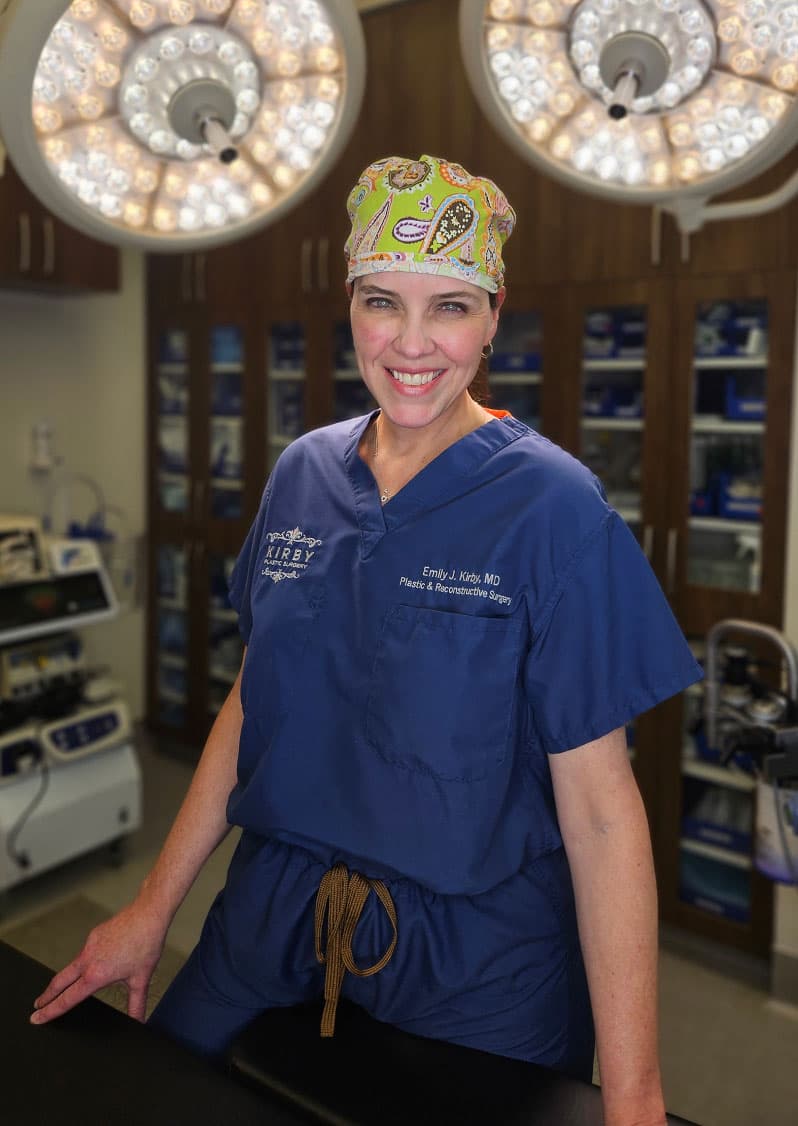Diastasis Recti (Abdominal Muscle Separation)
If you have abdominal muscle separation, or diastasis recti, it is important to learn about the anatomy behind it and your options for corrective surgery. Female plastic surgeon Dr. Emily Kirby works with many patients experiencing this condition and offers tummy tuck surgery to bring the muscles of the abdomen back together.
Causes of abdominal muscle separation
Pregnancy and weight gain can widen the abdominal muscles, causing diastasis recti. Diastasis is a separation of the abdominal muscles where they meet at the midline of your abdomen. After this occurs, they are usually unable to return to their correct anatomical position, leading to a bulged appearance, uncomfortable symptoms, and core weakness.
Symptoms of diastasis recti
Diastasis recti means that you lack proper abdominal support, and as a result, you may experience lower back pain, digestive issues, and a visible bulge in the skin. Pelvic floor dysfunction and stress urinary incontinence also commonly affect women who have given birth vaginally.
Tummy tuck to repair muscles
While ab workouts are excellent for maintaining muscle fitness, there is no exercise routine that will physically bring the muscles back together. Instead, a tummy tuck surgery is the only way to fully reposition the separated muscles.
A tummy tuck, medically termed “abdominoplasty,” includes tightening the musculature of the abdominal wall and repositioning the muscles to their correct anatomical position, which is called rectus muscle plication. The abdominal skin is then tightened on this firm foundation. It requires a horizontal incision placed just above the pubic bone, as well as a small incision hidden within the navel.
Though ab workouts are excellent for muscle fitness, tummy tuck surgery is the only way to fully reposition separated muscles.
Performed as part of a tummy tuck, diastasis recti repair mends the core cause of the post-pregnancy “pooch” and helps to relieve symptoms associated with these weakened muscles, including lower back pain and stress urinary incontinence. Abdominoplasty also contours the abdominal area, resulting in a smoother and firmer appearance.
Many patients choose to include abdominoplasty with rectus muscle plication in their “mommy makeover” plan. A mommy makeover is a customized combination of procedures to address childbearing-related changes and typically includes procedures like breast lift, breast reduction, breast implants, tummy tuck, or liposuction.
Tummy tucks may also repair small hernias
Small umbilical, ventral, or incisional hernias may be repaired during a tummy tuck. Larger hernias may require mesh and can be repaired during the same surgery in coordination with a general surgeon, if necessary.
Multi-modal anesthesia for an easier recovery
To help minimize pain after a tummy tuck, Dr. Kirby uses multimodal anesthesia, also called ERAS (Enhanced Recovery After Surgery) or “24-hour recovery,” including a TAP (Transversus Abdominis Plane) nerve block using Exparel®, a long-acting local anesthetic medication. This numbing agent complements specifically selected oral medications so that you are able to move around more easily, earlier after surgery, with fewer narcotics—an important element of a healthy recovery.
Female Plastic Surgeon Fort Worth
- Board-Certified Plastic Surgeon
- Over 12 years of experience in private practice
- Founder and Medical Director of Kirby Plastic Surgery, Kalos Medical Spa, and City Surgery Center—a Quad A-accredited, state-of-the-art facility located onsite
- Specialist in breast surgery and body contouring, including postpartum
- Castle Connolly Top Doctor since 2019
- First female Chief of Plastic Surgery, Texas Health Resources Harris Methodist Hospital
